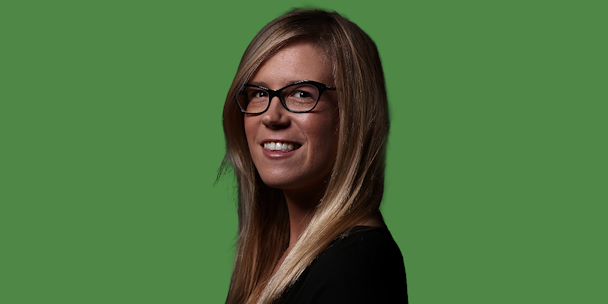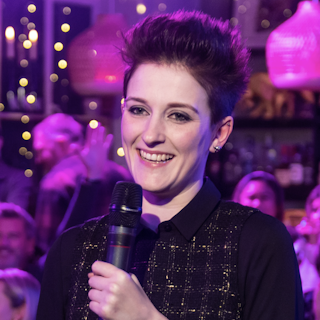The Judges’ Club: Getty Images on empowering teams to choose authentic representation
While you still have time to apply for an extension to enter The Drum Awards for PR, we caught up with jury member Anne Flanagan, vice-president of communications at Getty Images.

Anne Flanagan, vice-president of communications at Getty Images
You can find out more about how to enter the PR Awards here.
Flanagan began her career in the early noughties at Ogilvy Australia, working on one of the most coveted accounts at the time, Microsoft. It was a ruthless time for tech as Google took a stronger hold on the market and Microsoft faced criticism for its dominant position. Then came the 2008 financial crisis, which ultimately saw Flanagan move to Dubai to lead the agency’s tech division in the Middle East.
“But the nice thing about technology is even in times of crises, technology companies still seem to be growing and burgeoning,” she explains.
After a stint in London, Flanagan left agencyland altogether for a new role at Getty Images as head of PR for Asia Pacific and Latin America. Eight years and another transatlantic move later, she now resides in the US where she is vice-president of public relations, internal communications and corporate social responsibility.
As a judge for The Drum Awards for PR 2022, we caught up with her to find out more about her journey to the top, and how she’s trying to shift the dial on diversity and representation at Getty.
What’s been a career moment that you’ve been most proud of?
After two years in development, [Getty Images] launched an official collection called the Black History and Culture Collection. This is a not-for-profit initiative created to provide access to historical and cultural images of the African Black diaspora.
Following the murder of George Floyd, like with most companies there was an inner reflection of how our business has impacted what’s happening in the world, and how people of color are reflected in advertising and media.
One of the anti-racism commitments that came out of our Black Lives Matter statement was how we make it accessible for storytellers to be able to tell stories about Black history and culture where previously the content could be quite expensive.
We worked with internationally-recognized historians and educators to curate a wide array of photos representing Black culture and key historical events from the 19th century to the present day. The collection became over 30,000 images that are available to educators, scholars and not-for-profit organizations to support programs and initiatives that are focused on creating a deeper understanding and expanding the visual narrative of history.
It was a learning experience for me. I’m an Australian living in America, and understanding systemic racism built into what’s here has also been a journey. And by no means am I anywhere close to having any type of comprehensive understanding. But I’ve been able to work with amazing people who are very passionate about this.
What pieces of work have you seen recently that you thought were unique?
Getty Images does a lot of work with Glaad, an American non-governmental media monitoring organization that focuses on the authentic representation of the LGBTQI+ community, of which I’m a part.
Less than 1% of visuals include the LGBTQI+ community when it comes to advertising, media and movies. From our Visual GPS data and insights research we know that of the global self-identified LGBTQI+ community, almost 40% say they experience bias due to their sexual orientation.
When Citi and MasterCard did their True Name campaign, they had come to us to talk about how they could do this because they wanted it to be an authentic representation. They had someone from the community who was the creative director from Publicist, they had worked with Glaad to ensure authentic representation of the transgender community and they put a lot of thoughtful and concise effort into that campaign.
How important is it for the industry to celebrate excellence?
When you’re in an agency, the greatest thing about being there is that everybody does the same thing you do in some way, shape or form. You have that support and community around you. But when you go in-house into a brand, business or organization, you’re usually one of very few who do that role. There isn’t much understanding from your colleagues of the work you do and the work that goes into it. Being able to showcase how the industry is recognizing excellence in work helps you to build that rapport internally as well with colleagues to really understand that the work you’re doing is worthwhile, excellent and impactful.
What’s been the best advice you’ve ever received?
For my second job at Ogilvy in Australia, I had five interviews to get the job. As a low-level employee, I wondered why I was having so many. At the last one, owner and founder Mike Howorth led the interview. So I asked. He told me he could teach anyone to do PR, but what he can’t teach is the fire in the belly, he can’t teach you to have passion. And that’s why they had so many interviews.
And that’s stayed with me, especially when working on projects. I always think about how I can bring that excellence, expertise and passion for storytelling into the work that I do every day.
What is one problem in the PR industry that you would fix?
Dr Rebecca Swift, who heads up our creative insights team, often says that when we’re in front of the media and advertising industry, if you keep clicking on stereotypical content, that’s what rises to the surface of the algorithm. And we have done a lot of work as a business to work with our contributor or our content creator community to create authentic representations of underrepresented communities and overrepresented communities, so that diversity of content exists.
But there is definitely an unconscious bias around choosing what is deemed safe content. There are various ways that you can think about overcoming those biases, but it’s also about empowering your agency and your team to feel that they can take risks when it comes to what’s deemed risky on image choice. We should be empowering our teams to make authentic representation choices of the audiences that we’re trying to communicate with.
The deadline for The Drum Awards for PR 2022 has now passed, but you can still enter by applying for an extension.

